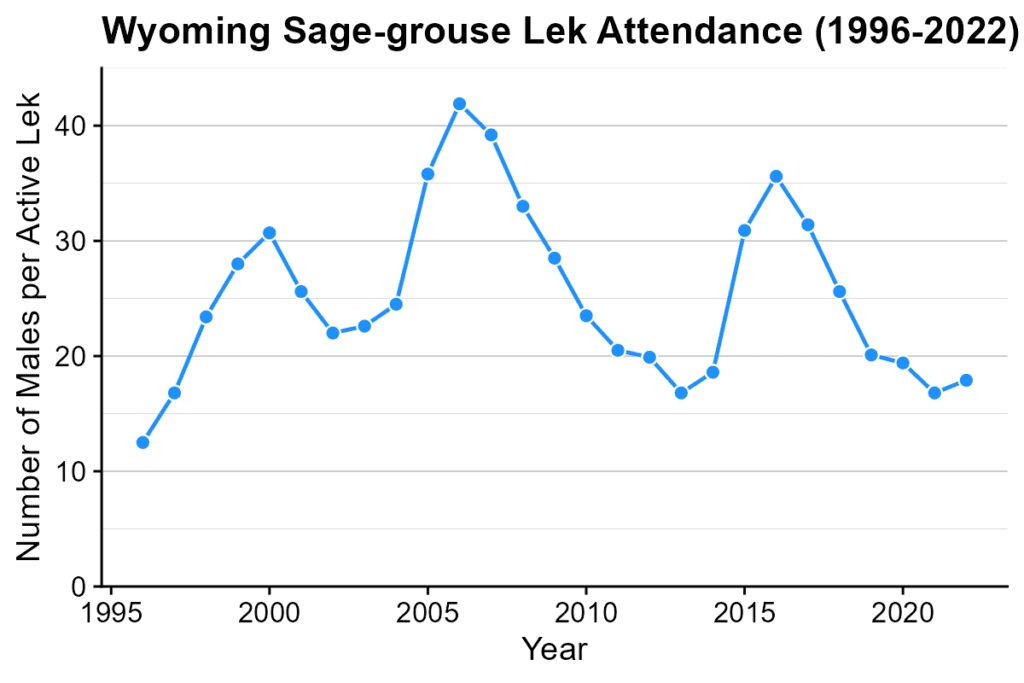News
Increase in sage-grouse lek attendance observed by G&F


Published
1 year agoon

According to data from the Wyoming Game and Fish Department, sage-grouse lek attendance saw an increase in lek counts this spring.
The department reports that in 2023, lek attendance increased 15 percent compared to last year. The appearance of more birds at leks is thought to be due to the natural population cycles of sage-grouse combined with good moisture that benefited habitat.
This spring, officials observed an average of 21.1 male sage-grouse per active lek. More than 18,000 peak, male sage-grouse were observed on 81 percent of known, occupied leks – a slight decrease compared to last year when 87 percent were checked. The decrease in observation efforts was due to the persistent winter conditions and subsequent muddy spring. Annual observations are carried out by Game and Fish, federal partners, consultants and volunteers. Birds are observed on the ground from a distance during their spring mating.
Habitat is key to the sustainability of sage-grouse populations. While last winter was tough on much of Wyoming’s wildlife it was not on sage-grouse, which have relatively high winter survival where habitat is not limiting.

“Sage-grouse are a sagebrush obligate species and could not survive without the plant,” Nyssa Whitford, Game and Fish sage-grouse and sagebrush biologist said. “During the winter months sage-grouse are able to fly to better habitats where sagebrush remains available.”
Well-timed moisture and available habitat are paramount to robust sage-grouse populations.
“Wyoming continues to invest significantly in efforts to study sage-grouse populations and conserve sage-grouse habitat. Each year, local working groups contribute over $500,000 to this effort,” Whitford said.
Game and Fish also monitors the percentage of known active and inactive leks throughout Wyoming. A lek is considered inactive if no birds or signs of strutting are observed under ideal conditions during mating season. Active leks remain steady at 78.2 percent.
Game and Fish report the department’s data on sage-grouse lek attendance reaches back nearly six decades and the cyclical nature of the bird’s population is evident.
“Sage-grouse populations rise and fall,” Whitford said. “Studies indicate Wyoming’s population cycles every seven to nine years. So, we were pleased to see an increase this year and anticipate more in the years to come.”
The cause of these well-established cycles is not understood, but it is theorized to be influenced by weather and climate, which impacts the availability of food and cover in the sagebrush ecosystem. The Wyoming sage-grouse populations hit an all-time low in the early 1990s following an extended drought and loss of habitat.
Game and Fish manages sage-grouse while taking into consideration the natural rises and falls populations experience over time. Part of that management includes a conservative hunting season that undergoes thorough review annually and a process where the public can provide comments.
To learn more about sage-grouse, click here.
